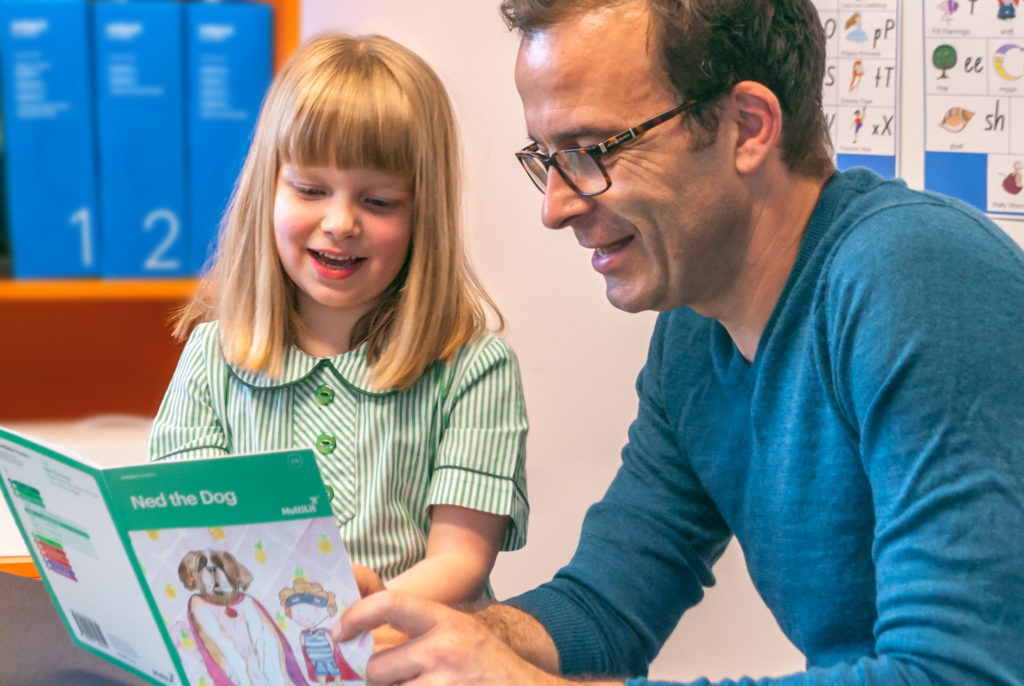A daily opportunity for quality time together
As a parent/caregiver, you play an important role in helping your child establish the skills and knowledge to become a successful reader. Reading together each day will nurture an interest in books and stories, while building several key literacy skills:
- Sharing a range of sounds and language that make up speech
- Extending spoken language by discovering new words
- Learning the alphabet and letter sounds
- Getting familiar with print concepts – how books and writing work

Tips for reading together
Here are some tips to make your reading time together more valuable and enjoyable.
- Choose the book together
Encourage participation by letting your child choose the book. You can help guide them. Suggest subjects they are interested in or stories that may relate to recent experience. Chat about a title, theme or cover illustration as they make their choice. You don’t need a different book each time – re-reading the same book several times allows the child to become familiar with the story and helps them learn new vocabulary. Over time you may be able to encourage some variation: stories with rhymes or alliteration will develop awareness of sounds; stories from different cultures help develop cultural literacy. - Set the scene
Find a place to read without distractions where they feel comfortable and can be fully engaged in the activity. If your child is very young and books are still a new concept, explain how books ‘work’: all books have a title and an author on the cover; show them how to hold a book and turn its pages from front to back. Show how we read words from left to right and down the page. - Engage your listener
Before you start the story, introduce the title of the book. Look at the front cover: ask your child about the image and talk about what the story might be about. Try to relate it to your child’s own experience, if you can. If the book is about dogs, talk about a dog you know. You may point out letters and sound them out. You can also discuss what might happen in the story. - Read the book
Read the story in a lively way with lots of expression. If you come across unfamiliar words, pause to explain what they mean. This improves your child’s vocabulary and helps them to understand the whole story. During the week, you might like to remind your child of some of the new words from the story book and relate them to everyday life. - Discuss the story
After you’ve finished reading, ask your child questions about the story. Chat and see what your child recalls and understands. This will help to develop language skills. - Make it fun
Be patient and enthusiastic to make reading together a positive experience for both of you. It’s a wonderful time to connect, engage and enchant your child with books and stories.
Establish a practice of reading aloud to your child each day – even for just 15 minutes. You will encourage a love of books and stories that will set them in good stead with their growing language and literacy skills.
Reading aloud together is important at all ages and continues to be beneficial, even after your child is reading independently.
Happy reading!
Facebook
Twitter
LinkedIn
